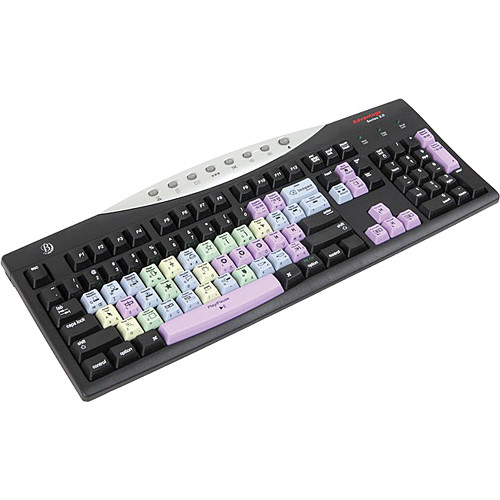

- #USING BELLA KEYBOARD WITH USB OVERDRIVE DRIVERS#
- #USING BELLA KEYBOARD WITH USB OVERDRIVE CODE#
- #USING BELLA KEYBOARD WITH USB OVERDRIVE PROFESSIONAL#
The Bella guy admitted that if I had exchanged it for another at B&H, I'd probably have the same problem.) The new keyboard has had no problems. Apparently, the whole production run had a problem.

I sent the keyboard back (they paid for the shipping) and they shipped me a new one from a different production run. Apparently, my computer saw the keyboard as a USB hub and I had to wait until XP was fully booted up before the keyboard would work.

I discovered I could not use the keyboard to access the start up menu during the boot-up process. This keyboard has (in my opinion) two unnecessary USB ports built into the back of the keyboard.
#USING BELLA KEYBOARD WITH USB OVERDRIVE PROFESSIONAL#
I bought a Bella Professional Series 3.0 keyboard from B&H about a year ago. But USB Overdrive 3 can now import and export its settings, so at least you’ll be able to move them from one Mac to another.Does anyone have experience using this keyboard? So if you have lots of application- or device-specific settings, you’ll need to recreate them in the new version. Interestingly, keyboard configurations don’t show up under the Keyboard option, but rather under Mouse and Other.Įxisting USB Overdrive users (the previous version was called 10.4.8) should take note that version 3 can’t read preferences from older versions. Once you do so, you have complete control over your devices. To create device- or application-specific controls, you need to choose the New Duplicate Settings command to copy those settings to a new set and then assign that set to a particular device or application. As you might guess, those controls are global. If there are no packages for your Linux distribution, and you dont want to use the AppImage package, youll need to build this from source, as explained here. The four options under the Settings tab are Any Mouse, Any Application Any Gaming, Any Application Any Keyboard, Any Application and Any Other, Any Application. USB Overdrive’s interface can also be a little tricky to figure out. In the case of my keyboard, the keyboard’s special commands overlay the F1 to F19 keys, so I could still activate the keyboard’s built-in brightness controls, for example, by pressing the fn key along with F1 or F2 (as defined in OS X’s Keyboard preference pane). If you click on a button and nothing happens, then USB Overdrive can’t handle it. How do you know if a key is supported? When the USB Overdrive preference pane is open, clicking on a button adds it to the list of buttons that you can control. USB Overdrive does, however, include some He has chosen not to try and support individual devices that don’t conform to regular human interface device (HID) guidelines.
#USING BELLA KEYBOARD WITH USB OVERDRIVE CODE#
The developer explains that USB Overdrive generally takes over sections of keyboards ( interfaces) that it can see, rather than individual keys, and that many vendors use non-standard or hidden code for their buttons. But with USB Overdrive, some keys worked and others didn’t.
#USING BELLA KEYBOARD WITH USB OVERDRIVE DRIVERS#
With Logitech’s drivers installed, those keys functioned properly. As with many keyboards, the diNovo Edge has special keys for functions such as display brightness, Expose, Dashboard, iTunes playback, volume, and application launching. It will then know and highlight that button for you to modify. I had few problems with the diNovo keyboard, however. To customize each button, simply click the button you want to customize while in USB Overdrive.


 0 kommentar(er)
0 kommentar(er)
